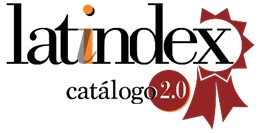Rotas de modelação matemática apoiadas pela tecnologia na aprendizagem da álgebra linear: um estudo com estudantes universitários da Costa Rica
DOI:
https://doi.org/10.48489/quadrante.23721Palavras-chave:
álgebra linear, estudantes universitários, rotas de modelação matemática, modelo computacional, folha de cálculoResumo
A modelação matemática é um contexto relevante e produtivo para o ensino da álgebra linear, favorecendo a aprendizagem de conceitos e competências de modelação dos estudantes, comumente negligenciadas na matemática universitária. Este estudo visa caracterizar rotas de modelação realizadas e competências postas em prática por estudantes universitários da Costa Rica, numa disciplina de álgebra linear, ao resolverem uma tarefa de modelação matemática envolvendo conceitos de conjunto gerador e base de um subespaço vetorial, usando uma folha de cálculo. A recolha de dados incluiu observação participante das discussões dos estudantes e suas resoluções escritas, bem como os ficheiros Excel produzidos. A análise revelou rotas de modelação dos estudantes incompletas e completas, nas quais utilizaram conceitos de combinação linear, subespaço gerado, base canónica e não canónica para construir modelos. O uso da tecnologia influenciou o modo como os alunos obtiveram resultados matemáticos e reais extraídos do seu modelo matemático. Nas rotas completas, o modelo computacional impulsionou transições no ciclo de modelação entre resultados computacionais, matemáticos e reais, melhorando os processos de modelação. Complementarmente, o Excel desempenhou duas funções principais, calcular e simular, permitindo aos grupos que o utilizaram avaliarem a eficácia dos seus modelos matemáticos e computacionais e validá-los no confronto com a situação real.
Referências
Alsina, C. (2007). Teaching applications and modelling at tertiary level. In W. Blum, P. Galbraith, H. W. Henn, & M. Niss (Eds.), Modelling and applications in mathematics education: The 14th ICMI study (pp. 469–474). New York, NY: Springer. https://doi.org/10.1007/978-0-387-29822-1
Blum, W. (2015). Quality teaching of mathematical modelling: What do we know, what can we do? In S. J. Cho (Ed.), Proceedings of the 12th International Congress on Mathematical Education - Intellectual and Attitudinal Challenges (pp. 73-96). New York, NY: Springer. https://doi.org/10.1007/978-3-319-12688-3_9
Blum, W., & Leiß, D. (2007). How do students and teachers deal with modelling problems? In C. Haines, P. L. Galbraith, W. Blum, & S. Khan (Eds), Mathematical modelling (ICTMA 12): Education, engineering and economics (pp. 222-231). Chichester, UK.: Horwood.
Borromeo Ferri, R. (2007). Modelling problems from a cognitive perspective. In C. Haines, P. Galbraith, W. Blum, & S. Khan (Eds.), Mathematical modelling (ICTMA 12): Education, engineering and economics (pp. 260-270). Chichester, UK.: Horwood.
Borromeo Ferri, R. (2018). Learning how to teach mathematical modelling in school and teacher education. Cham, Switzerland: Springer. https://doi.org/10.1007/978-3-319-68072-9
Cárcamo, A., Gómez, J., & Fortuny, J. (2016). Mathematical modelling in engineering: A proposal to introduce linear algebra concepts. Journal of Technology and Science Education (JOTSE), 6(1), 62–70. https://doi.org/10.3926/jotse.177
Chaamwe, N., & Shumba, L. (2016). Spreadsheets: A tool for e-learning – A case of matrices in Microsoft Excel. International Journal of Information and Education Technology, 6(7), 570–575. https://doi.org/10.7763/IJIET.2016.V6.753
Cohen, L., Manion, L., & Morrinson, K. (2007). Research methods in education (6th ed.). New York, NY: Routledge. https://doi.org/10.4236/ahs.2015.44023
Costa, V. A., & Rossignoli, R. (2017). Enseñanza del álgebra lineal en una facultad de ingeniería: Aspectos metodológicos y didácticos. Revista Educación en Ingeniería, 12(23), 49-55. https://doi.org/10.26507/rei.v12n23.734
Czocher, J. (2018). How does validating activity contribute to the modelling process? Educational Studies in Mathematics, 99, 137–159. https://doi.org/10.1007/s10649-018-9833-4
Dogan-Dunlap, H. (2010). Linear algebra students’ modes of reasoning: Geometric representations. Linear Algebra and its Applications, 432(8), 2141–2159. https://doi.org/10.1016/j.laa.2009.08.037
Galbraith, P., & Stillman, G. (2006). A framework for identifying student blockages during transitions in the modelling process. ZDM Mathematics Education, 38(2), 143–162. https://doi.org/10.1007/BF02655886
Greefrath, G. (2011). Using technologies: New possibilities of teaching and learning modelling—Overview. In G. Kaiser, W. Blum, R. Borromeo Ferri, & G. Stillman (Eds.), Trends in teaching and learning of mathematical modelling: ICTMA 14 (pp. 301–304). Dordrecht: Springer. https://doi.org/10.1007/978-94-007-0910-2_30
Greefrath, G., Hertleif, C., & Siller, H.-S. (2018). Mathematical modelling with digital tools – A quantitative study on mathematising with dynamic geometry software. ZDM Mathematics Education, 50, 233–244. https://doi.org/10.1007/s11858-018-0924-6
Haspekian, M. (2005). An ‘instrumental approach’ to study the integration of a computer tool into mathematics teaching: The case of spreadsheets. International Journal of Computers for Mathematical Learning, 10(2), 109–141. https://doi.org/10.1007/s10758-005-0395-z
Kaiser, G. & Sriraman, B. (2006). A global survey of international perspectives on modelling in mathematics education. ZDM Mathematics Education, 38, 302–310. https://doi.org/10.1007/BF02652813
Maaβ, K. (2006). What are modelling competencies? ZDM Mathematics Education, 38(2), 113–142. https://doi.org/10.1007/BF02655885
Niss, M., Blum, W., & Galbraith, P. (2007). Introduction. In W. Blum, P. Galbraith, H.-W. Henn, & M. Niss (Eds.), Modelling and applications in mathematics education: The 14th ICMI study (pp. 3–32). New York, NY: Springer. https://doi.org/10.1007/978-0-387-29822-1
Rensaa, R. J. (2017). Approaches to learning of linear algebra among engineering students. In T. Dooley & G. Gueudet (Eds.), Proceedings of the 10th Congress of the European Society for Research in Mathematics Education (CERME10) (pp. 2241-2249). Dublin: DCU Institute of Education & ERME.
Rensaa, R., Hogstad, N., & Monaghan, J. (2020). Perspectives and reflections on teaching linear algebra. Teaching Mathematics and its Applications, 39(4), 296–309. https://doi.org/10.1093/teamat/hraa002
Sánchez, J. (2019). Carta al estudiante de curso MA1004: I semestre. Universidad de Costa Rica.
Siller, H.-S., & Greefrath, G. (2010). Mathematical modelling in class regarding to technology. In V. Durand-Guerrier, S. Soury-Lavergne, & F. Arzarello (Eds.), Proceedings of the 6th Congress of the European Society for Research in Mathematics Education (CERME 6) (pp. 2136–2145). Lyon: Institute National de Recherche Pédagogique and ERME.
Stewart, S., Andrews-Larson, C., & Zandieh, M. (2019). Linear algebra teaching and learning: Themes from recent research and evolving research priorities. ZDM Mathematics Education, 51, 1017–1030. https://doi.org/10.1007/s11858-019-01104-1
Stewart, S., & Thomas, M. O. J. (2010). Student learning of basis, span and linear independence in linear algebra. International Journal of Mathematical Education in Science and Technology, 41(2), 173–188. https://doi.org/10.1080/00207390903399620
Trigueros, M., & Possani, E. (2013). Using an economics model for teaching linear algebra. Linear Algebra and its Applications, 438(4), 1779–1792. https://doi.org/10.1016/j.laa.2011.04.009
Wawro, M., Rasmussen, C., Zandieh, M., Sweeney, G. F., & Larson, C. (2012). An inquiry-oriented approach to span and linear independence: The case of the magic carpet ride sequence. PRIMUS, 22(8), 577–599. https://doi.org/10.1080/10511970.2012.667516










